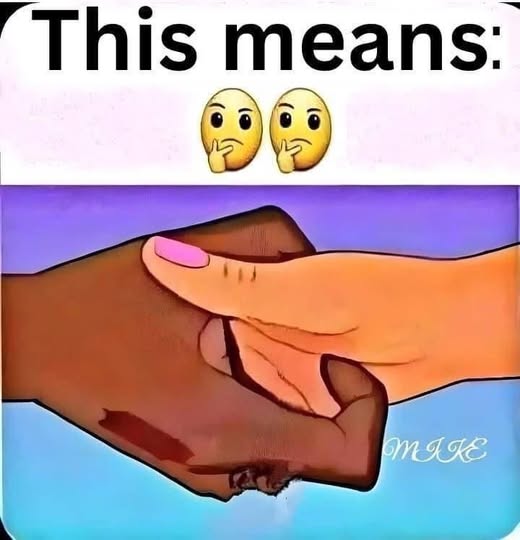Scratching someone’s palm during a handshake or interaction may seem like an insignificant or trivial act, but this subtle gesture carries layers of meaning that depend heavily on cultural, social, and situational contexts. When it occurs between a man and a woman, it can evoke curiosity and speculation about its intent. Is it playful, flirtatious, or purely accidental? While interpretations may vary, this small act reflects the nuances of non-verbal communication, which often speak louder than words.

In certain cultures, scratching the palm is viewed as a romantic gesture, a subtle and quiet way of expressing attraction or interest without direct verbal acknowledgment. For example, during a handshake or other moments of brief contact, a man might gently scratch a woman’s palm as a signal of flirtation. This physical act is often deliberate and calculated, used to convey feelings or desires that might not be openly discussed. The palm, being a sensitive and intimate part of the body, amplifies the personal nature of the gesture. This touch feels purposeful and private, making it a compelling way to communicate deeper interest. In moments of connection—whether during conversation, a shared smile, or lingering eye contact—the gesture can reinforce a flirtatious undertone that adds weight to an otherwise casual interaction.
However, the significance of scratching someone’s palm is not universal. Across cultures and situations, the meaning behind this act can change drastically. In many Western societies, this gesture is largely unrecognized as holding romantic or flirtatious intent. It may simply be dismissed as an accidental or unconscious act, particularly when it occurs without other signs of romantic interest. People often make small, habitual gestures during interactions—fidgeting, tapping, or adjusting their hands—and scratching someone’s palm might be no more than a reflexive movement.
@_dianadanielle_ Replying to @kayrose_01010 #fyp ♬ Who Born The Maga – Wande Coal
In some cases, scratching the palm could serve a completely different purpose. For example, in playful social settings, the act might be used as a teasing or lighthearted gesture to create a sense of humor or connection. A man might do it jokingly to test the other person’s reaction or to add an element of surprise to the moment. Similarly, in certain regions where physical touch carries symbolic meaning, the act may hold cultural or social significance. Interpretations can differ widely, and assumptions about intent may lead to misunderstandings. For instance, one person might perceive the act as flirtation, while another may see it as an entirely innocent and meaningless interaction.
In many African and Caribbean cultures, scratching someone’s palm during a handshake is more widely understood as a subtle way to express romantic interest. It is seen as a quiet signal—deliberate and meaningful—where words are not needed to communicate attraction. This interpretation has been popularized in media and cultural conversations, but even within these regions, its significance can vary depending on the individuals and the context of the interaction.
Conversely, in many Asian cultures, where physical touch is often reserved for close or intimate relationships, such gestures can be viewed as intrusive, strange, or inappropriate rather than flirtatious. The meaning is shaped not just by individual perception but also by deeply rooted cultural norms surrounding personal space and physical contact.
The importance of context and intent cannot be overstated when interpreting this gesture. For example, if scratching the palm occurs during a formal handshake in a professional environment, it is unlikely to carry any romantic significance. Professional settings have their own expectations regarding decorum and physical interactions, and such a gesture would likely be perceived as unintentional or inappropriate in this context. However, if the same gesture happens in a relaxed or personal setting—particularly where mutual attraction may already exist—the meaning could shift dramatically. Paired with lingering eye contact, a smile, or other signs of interest, the gesture may indeed suggest flirtation or romantic curiosity.
When faced with uncertainty about someone’s intentions, it’s wise to reflect on the broader context of the interaction. Was the scratching intentional or purely accidental? Did it occur in a situation where flirtation or romantic signals might be considered appropriate? Sometimes, a gesture that seems ambiguous at first can be better understood when considered alongside other behaviors and actions. Watching for additional signs of interest or noticing patterns over time can offer valuable insight into whether the gesture was meaningful or not.
Communication is also a useful tool when navigating these situations. If the gesture feels intentional but unclear, addressing it in a light-hearted way can help clarify its meaning. For example, a playful comment like, “Was that part of the handshake, or are you trying to tell me something?” keeps the tone casual while inviting an explanation. This approach allows room for clarification without creating discomfort or embarrassment.
Regardless of its intent, it is essential to honor personal boundaries and respect others’ comfort levels with physical contact. Even the smallest gestures, such as scratching someone’s palm, must be approached with sensitivity. Cultural norms, personal preferences, and situational appropriateness all play a role in how physical contact is received. Being mindful of these factors ensures that such interactions are interpreted positively and do not cross personal or cultural boundaries.
In conclusion, scratching someone’s palm may appear to be a small and insignificant act, but it highlights the complexity of non-verbal communication. Depending on the cultural, personal, and social context, the gesture can range from flirtatious and romantic to entirely innocent or accidental. While it may carry romantic significance in some regions or circumstances, in others, it might be viewed as meaningless or even inappropriate. Ultimately, understanding the intent and meaning of the gesture requires careful consideration of the situation, the individuals involved, and the broader dynamics at play.
Non-verbal cues often say as much as words, but they are also easily misinterpreted. By paying attention to context, purpose, and boundaries, we can ensure that gestures—no matter how subtle—enhance communication rather than cause confusion.





